Acute Administration of Metformin Protects Against Neuronal Apoptosis Induced by Cerebral Ischemia-Reperfusion Injury via Regulation of the AMPK/CREB/BDNF Pathway
- PMID: 35431946
- PMCID: PMC9010658
- DOI: 10.3389/fphar.2022.832611
Acute Administration of Metformin Protects Against Neuronal Apoptosis Induced by Cerebral Ischemia-Reperfusion Injury via Regulation of the AMPK/CREB/BDNF Pathway
Erratum in
-
Corrigendum: Acute Administration of Metformin Protects Against Neuronal Apoptosis Induced by Cerebral Ischemia-Reperfusion Injury via Regulation of the AMPK/CREB/BDNF Pathway.Front Pharmacol. 2022 Jun 2;13:929835. doi: 10.3389/fphar.2022.929835. eCollection 2022. Front Pharmacol. 2022. PMID: 35721130 Free PMC article.
Abstract
Metformin is a first-line anti-diabetic agent with a powerful hypoglycemic effect. Several studies have reported that metformin can improve the prognosis of stroke patients and that this effect is independent of its hypoglycemic effect; however, the specific mechanism remains unclear. In this research, we explored the effect and specific mechanism of metformin in cerebral ischemia-reperfusion (I/R) injury by constructing a transient middle cerebral artery occlusion model in vivo and a glucose and oxygen deprivation/reoxygenation (OGD/R) model in vitro. The results of the in vivo experiments showed that acute treatment with low-dose metformin (10 mg/kg) ameliorated cerebral edema, reduced the cerebral infarction volume, improved the neurological deficit score, and ameliorated neuronal apoptosis in the ischemic penumbra. Moreover, metformin up-regulated the brain-derived neurotrophic factor (BDNF) expression and increased phosphorylation levels of AMP-activated protein kinase (AMPK) and cAMP-response element binding protein (CREB) in the ischemia penumbra. Nevertheless, the above-mentioned effects of metformin were reversed by Compound C. The results of the in vitro experiments showed that low metformin concentrations (20 μM) could reduce apoptosis of human umbilical vein endothelial cells (HUVECs) under OGD/R conditions and promote cell proliferation. Moreover, metformin could further promote BDNF expression and release in HUVECs under OGD/R conditions via the AMPK/CREB pathway. The Transwell chamber assay showed that HUVECs treated with metformin could reduce apoptosis of SH-SY5Y cells under OGD/R conditions and this effect could be partially reversed by transfection of BDNF siRNA in HUVECs. In summary, our results suggest that metformin upregulates the level of BDNF in the cerebral ischemic penumbra via the AMPK/CREB pathway, thereby playing a protective effect in cerebral I/R injury.
Keywords: AMP-activated protein kinase; brain-derived neurotrophic factor; cerebral ischemia-reperfusion injury; metformin; neuronal apoptosis.
Copyright © 2022 Liu, Li, Liu, Li, Wu, Jiang, Wang, Chang, Jiang, Luo, Zhu, Li and Wang.
Conflict of interest statement
The authors declare that the research was conducted in the absence of any commercial or financial relationships that could be construed as a potential conflict of interest.
Figures

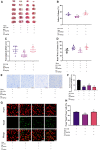
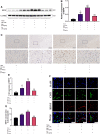

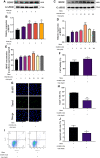
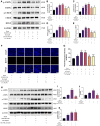
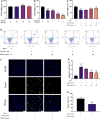
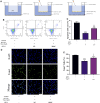

Similar articles
-
Mailuoning oral liquid attenuates convalescent cerebral ischemia by inhibiting AMPK/mTOR-associated apoptosis and promoting CREB/BDNF-mediated neuroprotection.J Ethnopharmacol. 2023 Dec 5;317:116731. doi: 10.1016/j.jep.2023.116731. Epub 2023 Jun 3. J Ethnopharmacol. 2023. PMID: 37277084
-
Metformin Modulates High Glucose-Incubated Human Umbilical Vein Endothelial Cells Proliferation and Apoptosis Through AMPK/CREB/BDNF Pathway.Front Pharmacol. 2018 Nov 6;9:1266. doi: 10.3389/fphar.2018.01266. eCollection 2018. Front Pharmacol. 2018. PMID: 30459620 Free PMC article.
-
The Protective Effects of Apremilast Against Oxygen-Glucose Deprivation/Reperfusion (OGD/R)-Induced Inflammation and Apoptosis in Astroglia Mediated by CREB/BDNF.Neurotox Res. 2021 Jun;39(3):754-763. doi: 10.1007/s12640-021-00340-2. Epub 2021 Apr 7. Neurotox Res. 2021. PMID: 33826130
-
Adiponectin peptide alleviates oxidative stress and NLRP3 inflammasome activation after cerebral ischemia-reperfusion injury by regulating AMPK/GSK-3β.Exp Neurol. 2020 Jul;329:113302. doi: 10.1016/j.expneurol.2020.113302. Epub 2020 Apr 8. Exp Neurol. 2020. PMID: 32275928 Review.
-
New insights on the potential anti-epileptic effect of metformin: Mechanistic pathway.J Cell Mol Med. 2023 Dec;27(24):3953-3965. doi: 10.1111/jcmm.17965. Epub 2023 Sep 22. J Cell Mol Med. 2023. PMID: 37737447 Free PMC article. Review.
Cited by
-
The AMPK/GDF15 Axis: A Novel Target for the Neuroprotective Effects of Metformin in Ischemic Stroke.Mol Neurobiol. 2025 Jun 9. doi: 10.1007/s12035-025-05126-7. Online ahead of print. Mol Neurobiol. 2025. PMID: 40489027 Review.
-
Treatment of Stroke at a Delayed Timepoint with a Repurposed Drug Targeting Sigma 1 Receptors.Transl Stroke Res. 2024 Dec;15(6):1035-1049. doi: 10.1007/s12975-023-01193-x. Epub 2023 Sep 13. Transl Stroke Res. 2024. PMID: 37704905
-
The effect of triple reuptake inhibitor toludesvenlafaxine on neurological function in cerebral ischemic rats.Front Pharmacol. 2023 Apr 21;14:1073099. doi: 10.3389/fphar.2023.1073099. eCollection 2023. Front Pharmacol. 2023. PMID: 37153779 Free PMC article.
-
Mechanism of Resveratrol Improving Ischemia-Reperfusion Injury by Regulating Microglial Function Through microRNA-450b-5p/KEAP1/Nrf2 Pathway.Mol Biotechnol. 2023 Sep;65(9):1498-1507. doi: 10.1007/s12033-022-00646-2. Epub 2023 Jan 19. Mol Biotechnol. 2023. PMID: 36656498
-
Metformin in Diabetic Retinopathy: Mechanisms, Therapeutic Potential, and Barriers.Cureus. 2025 Jul 7;17(7):e87455. doi: 10.7759/cureus.87455. eCollection 2025 Jul. Cureus. 2025. PMID: 40772141 Free PMC article. Review.
References
-
- Ashabi G., Khalaj L., Khodagholi F., Goudarzvand M., Sarkaki A. (2015). Pre-treatment with Metformin Activates Nrf2 Antioxidant Pathways and Inhibits Inflammatory Responses through Induction of AMPK after Transient Global Cerebral Ischemia. Metab. Brain Dis. 30 (3), 747–754. 10.1007/s11011-014-9632-2 - DOI - PubMed
LinkOut - more resources
Full Text Sources

